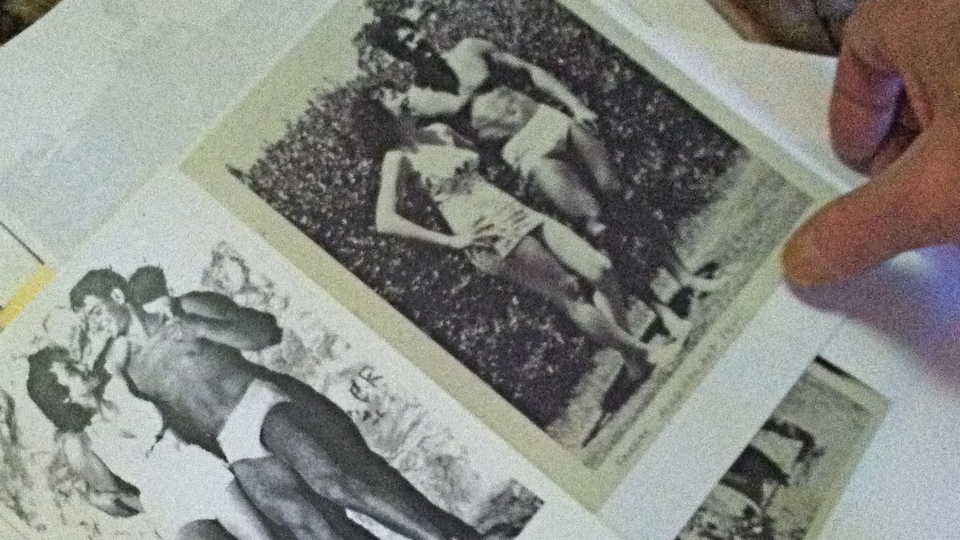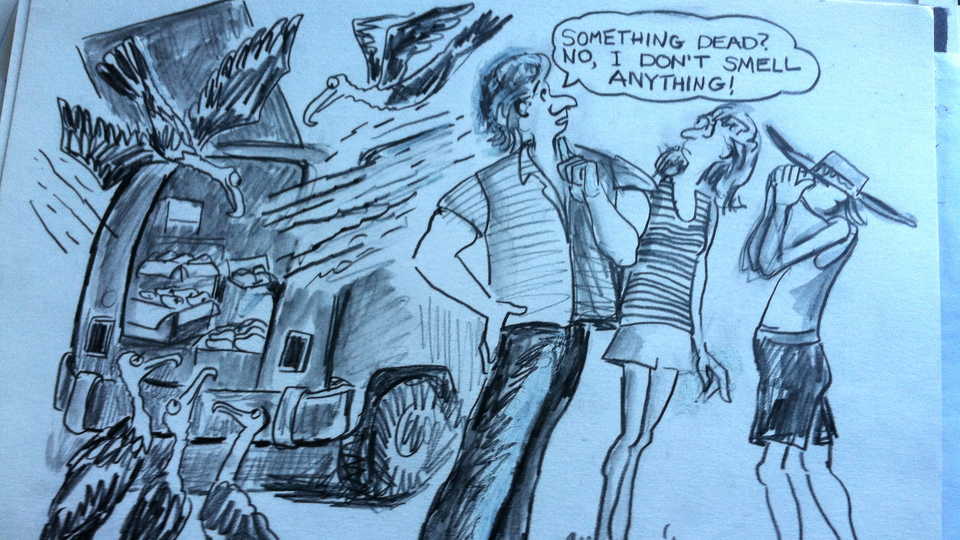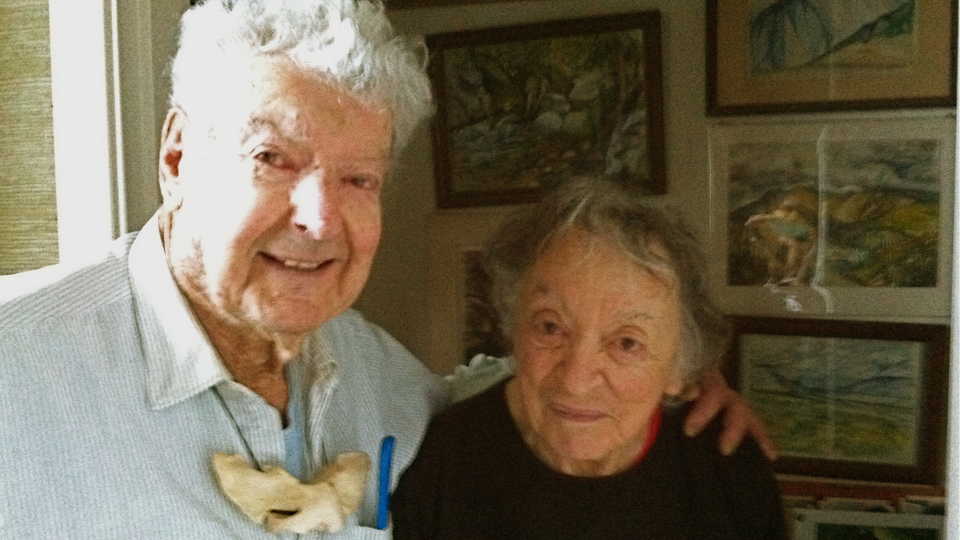Science News
The Treasure of Passionate Lives
Valentine's Day is here again and this year I'm fascinated by thoughts of art and science, and of love. I just visited Ray Bandar’s “Bone Palace” again, affirming the suspicion from my previous visit that there must be more to this place than peculiarity, scientific data, and sheer volume, and this time I found it.
Ray “Bones” Bandar is the man who, in over 60 years as a volunteer Field Associate for the California Academy of Sciences, collected more than 7,000 animal skulls as well as the crucial accompanying data for scientific research purposes. This collection, which includes approximately 6,000 mammal skulls, will eventually be entrusted to the Academy. The addition will be a game-changer not only to the scope and potential of the Academy’s mammalogy collection, but to the entire planet’s collection since research institutions worldwide will have access to it. (For an example of the importance of scientific research collections, check out Why Collections Matter.)
Although Ray sees skulls and bones as works of art, he has become somewhat of a science cult figure—an exuberant, unorthodox character with bright-white wild hair, perpetual donning of his favorite “bow tie” (the atlas bone of a spotted hyena), and adornment of a long-handled plastic comb protruding from his shirt’s front pocket—a zany, tenacious guy who’s gone to great lengths to acquire a vast, macabre collection.
What does it mean exactly to collect skulls? Here is an example of Ray collecting: It's cold, foggy, and very wet at some ocean beach in the greater Bay Area and Ray Bandar, after walking several miles in soft sand, is straddling the neck of a washed up, dead northern elephant seal bull, 4m (13 ft) long, weighing 2,000kg (4,400 lbs). Using an array of sharp tools—scalpels, knives, picks, scissors, and other unnamed metal devices—he cuts off the seal’s rotting head while waves crash onto him and the carcass, jolting and soaking them until Ray finally cuts through the flesh and the vertebral column. After carrying the head up the beach, he picks off much of flesh, inserts a curved, fork-like metal tool into the foremen magnum to scoop out the brains, puts the remaining braincase and mandible in a plastic bag, slings it over his shoulder, and walks the two-plus miles back in soft sand. The process didn’t end there; next he removes every bit of tissue, either with the use of flesh-eating dermestid beetles, maceration in buckets of warm water for weeks on end, or by burying the bones for long periods of time.
Yes, 7,000 skulls.
By the turn of the millennium, Ray’s collection had become so large and diverse that in 2002 (and again in 2014), the California Academy of Sciences, which currently has 46 million specimens in collections (the 4th largest scientific research collection in the world), built a special exhibit, Skulls, with close to two thousand of Ray's pieces. Furthermore, the architectural team that designed the new Academy building, which opened in Golden Gate Park in 2008, specced the building in order to accommodate this sizable stock of specimens.
Ray spent his career as a high school biology teacher, but all of his spare time, including family vacations in the United States and abroad, was devoted to collecting. When he retired from teaching in 1990, he became the 24-hour hotline for any Bay Area institution—including zoos—that ended up with dead animals, which allowed him to work on exotic species such as hippopotamuses, chimpanzees, and tigers to name just a few. His full collection includes whales, fish, turtles, bats, dolphin, rattlesnakes, alligators, and much, much more. Ray became an expert on these animals and can talk endlessly and passionately about them. Move over Dos Equis guy, this is the most interesting man in the world.
There have been a number of excellent articles and videos produced about Ray, including three stories on National Geographic Television, but erroneously none has really looked beyond the man and to the person who played an intrinsic role in his life—his wife of 61 years—Alkmene Bandar. In reality, her influence is tantamount to his vast scientific collection and legacy, and furthermore deserves to be celebrated in her own right.
Alkmene Bandar (née Smernes), who grew up in Napa, California, is a confident, witty, beautifully alluring woman even at the age of 85. She met Ray in 1947 while they were both students at the Academy of Advertising Art in San Francisco. Their love, passion, and appreciation of art sparked a bond that is lasting a lifetime.
In the beginning of their relationship, Ray would hitchhike to Napa where Alkmene taught him how to drive in her 1946 bright yellow Ford convertible. When they married in 1954, they purchased camping equipment neither of them knew how to use and set off on an 11-week, 11,000-mile journey driving across the US for their honeymoon. And even though Ray had already collected a few sea lion skulls while in high-school, it was Alkmene who yelled to stop the car in order to pick up a horse skull and parts of its skeleton near the side of the road. The remainder of the trip became a collecting mission.
In the decades to follow, Alkmene became a vital part of the collecting process. On a six-week summer expedition in a cloud forest near Oaxaca, Mexico in 1965, Alkmene was hired as the camp cook. She was left by herself in camp all day while Ray and PhD candidate Luis Baptista (who later became a renowned ornithologist), traipsed through the brush looking for small mammals. Alkmene, when not cooking and cleaning-up camp, created 99 works from gouache and pen and ink and recalls this time as, “Beautiful! There was no agenda. I had the freedom to do whatever I wanted.” This, at a time when most women her age were stuck in their homes scrubbing diapers and making fruit-laden Jello-molds.
In addition to being a talented and prolific artist, Alkmene was an accomplished racewalker, swimmer, hiker, cyclist, and world-traveler. She sketched and painted her way (without Ray) through much of Europe, Korea, Haiti, and New York City. She created works of watercolor, pen and ink, gouache, and acrylic so masterful, they truly rival the likes of Gauguin, Picasso, and Georgia O’Keefe.
Ray and Alkmene’s collecting expeditions include Alaska in 1967, Australia in 1981, and many trips to Baja where Ray lights-up with childlike glee as he recalls their time together, “We went swimming, played in the surf and just had a ball!”
During seven weeks in Australia, the two collected 100 specimens, but the real prize generated on the trip was a 50-page cartoon book drawn by Alkmene using Ray’s quips, verbatim, about the journey. These parodies not only capture special moments and Ray’s quirky pursuit, they brilliantly capture the couple themselves—caricatures which are unmistakably them—their intrepid personalities and experiences jumping off the pages.
Back in the Bay Area, when Alkmene wasn’t working in her art studio adjacent to the rooms of skulls in the basement, she was trekking for miles on beaches, scouting dead whales and other marine mammals for Ray’s collection.
The couple’s rich life permeates the three stories of their home. The walls, floors and even the Palace’s rafters (which hold over a thousand sea lion skulls) are so packed full of everything from stones to sculpture to skulls, and to Alkmene’s art, that although the house is occupied by people, the furniture seems completely out of place.
Art and science in the extreme, this is. I sit back, happy to now understand its quintessence and to marvel at Alkmene and Ray—their passion, their talent, and their courage, all driven by love—love for art, love for life, and love for each other.
Nan Sincero works for the Oceanic Society and is a docent at the California Academy of Sciences.


